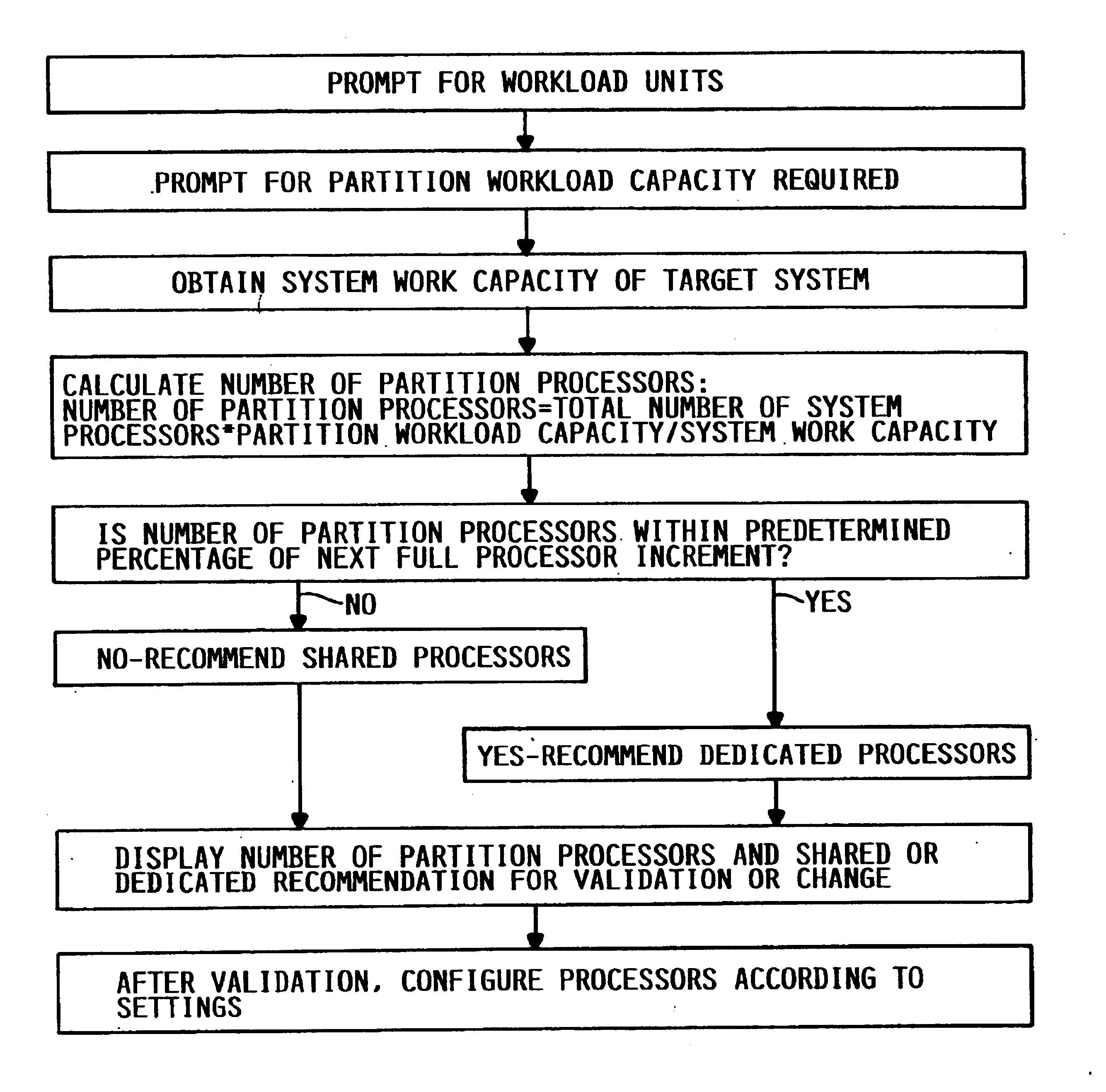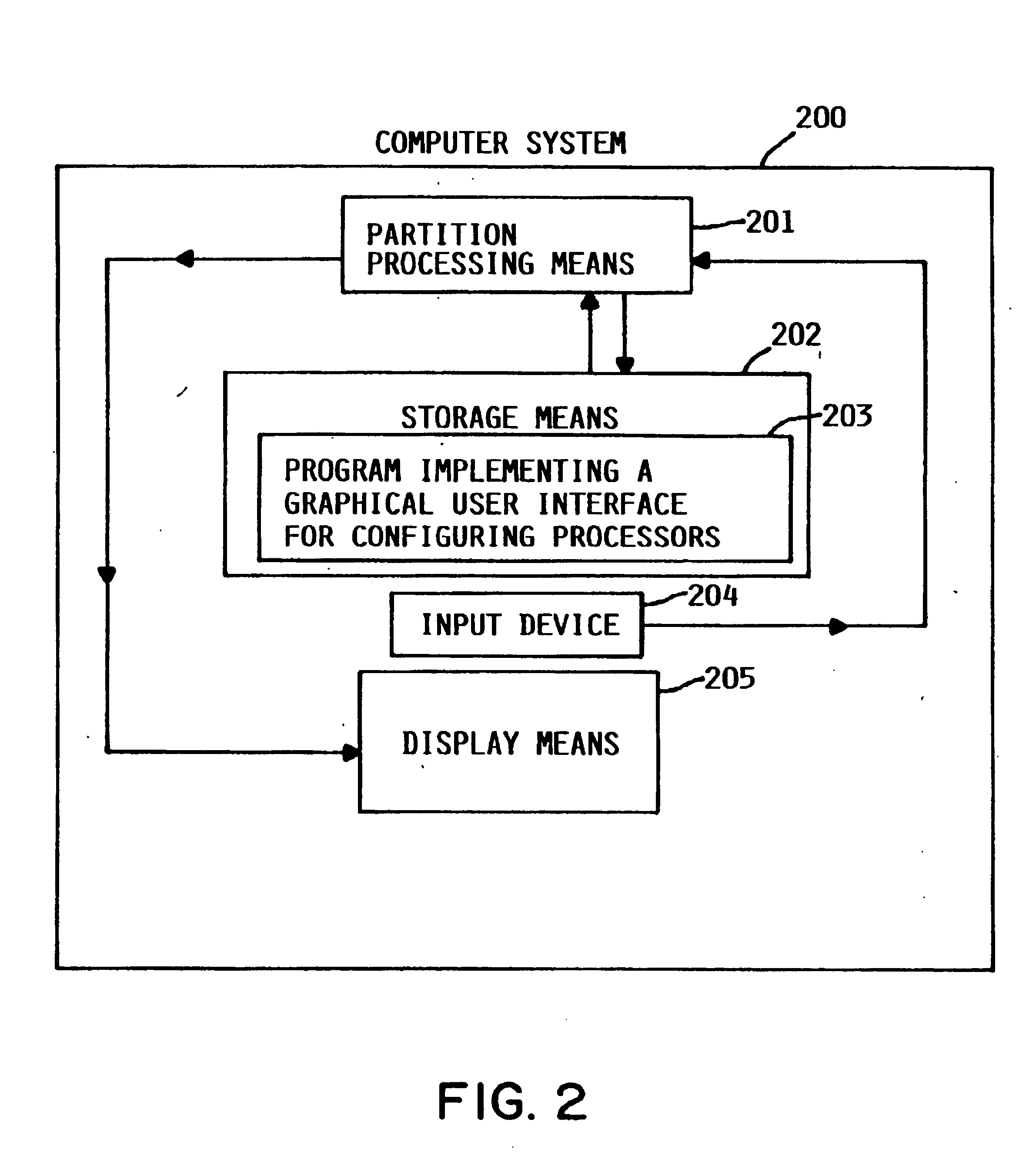Technique for configuring processors in system with logical partitions
- Summary
- Abstract
- Description
- Claims
- Application Information
AI Technical Summary
Benefits of technology
Problems solved by technology
Method used
Image
Examples
Embodiment Construction
)
[0032]The invention will now be described in more detail by way of example with reference to the embodiment(s) shown in the accompanying figures. It should be kept in mind that the following described embodiment(s) is / are only presented by way of example and should not be construed as limiting the inventive concept to any particular physical configuration.
[0033]This invention relates to a technique of using a capacity-based measurement to configure processors for logical partitions. Instead of specifying a quantity of processing units for a logical partition, the user interface accepts a processing capacity value in units of work like CPW or TPC-C, or any well-defined workload measurement units.
[0034]For example, a server system may have 2 processors and be capable of 1000 CPW. The system administrator wants to create a logical partition to support a 250 CPW workload.
[0035]To implement this partition using existing user interface techniques, the system administrator would need to u...
PUM
 Login to View More
Login to View More Abstract
Description
Claims
Application Information
 Login to View More
Login to View More - R&D
- Intellectual Property
- Life Sciences
- Materials
- Tech Scout
- Unparalleled Data Quality
- Higher Quality Content
- 60% Fewer Hallucinations
Browse by: Latest US Patents, China's latest patents, Technical Efficacy Thesaurus, Application Domain, Technology Topic, Popular Technical Reports.
© 2025 PatSnap. All rights reserved.Legal|Privacy policy|Modern Slavery Act Transparency Statement|Sitemap|About US| Contact US: help@patsnap.com



